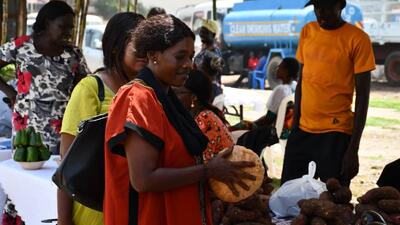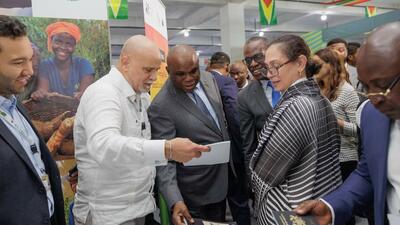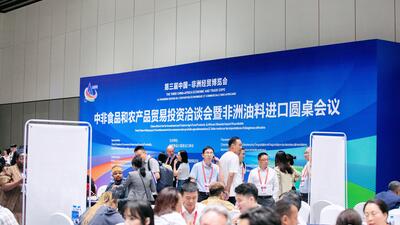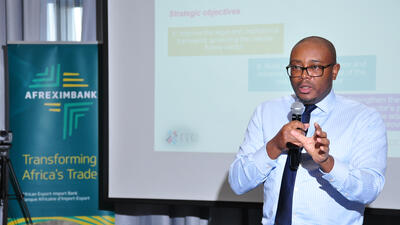

How financial integration can help regional integration in Africa
Intra-African trade, especially with Nigeria and South Africa, is growing at a robust pace. It increased more than fivefold in 1995-2012 from US$27.9 billion to US$148.9 billion. However, given that intra-African trade remains the lowest in the world – 12% compared to 25% for the ASEAN region and 17% among the Mercosur countries – there is scope for more growth.
To strengthen regional integration, a greater effort is needed to eliminate tariffs and non-tariff barriers and to implement a roadmap to free trade areas and customs unions. However, tariffs and non-tariff barriers are not the only obstacles to regional integration in Africa. It will be equally important to strengthen financial integration.
Trade, finance and plumbingPayments and settlements – the ‘plumbing’ of financial systems – are critical to financial integration. Properly functioning and costefficient payment and settlement systems help support intra-regional trade and finance exchanges as well as remittances. In Africa, solutions are needed to reduce transaction costs associated with foreign currency clearing, settlements, currency risks and remittance transfers.
Transaction costs arise when trade and investment is cleared and settled in foreign currency outside Africa. For instance, the Society for Worldwide Interbank Financial Telecommunication (SWIFT) indicates that about half of intra-African import and export settlements involve a bank outside Africa (figure 1). In particular, U.S. dollar clearing banks are becoming more important as trade and investment within Africa, about 23% of total trade according to SWIFT data, and with other emerging markets is increasing.
Know-your-cutomer (KYC), anti-money laundering and financial terrorism regulations also raise transaction expenses. Financial integration can help reduce those costs. SWIFT figures show that intraregional trade is higher among the member states of the West African Economic and Monetary Union than in other regional economic communities, reflecting the use of a common currency and a regional financial infrastructure.
Currency risksThere is also a need to reduce the costs from trading in more than 30 different regional currencies. High market volatility and administrative measures by central banks with occasionally low foreign-exchange reserves remain an issue.
Furthermore, the number of countries adopting more flexible exchange-rate regimes has increased, resulting in increased market volatility as exchange rates become a more frequently used tool to absorb external shocks. Many countries rely on administrative measures in forex markets and ration foreign currencies when international reserves are low. Instruments to mitigate currency risks, such as swap arrangements, would help strengthen cross-border investments.
In the absence of private-sector involvement, consideration could be given to multi-lateral solutions. The World Bank’s private finance arm, the International Finance Corporation (IFC), issues bonds in local currency but typically swaps its positions back to U.S. dollars. The IFC’s efforts to kickstart local swap markets are laudable, but ultimately domestic banks and corporations should play a more important role. It is therefore important to identify and address existing obstacles to market development, starting with banking and forex market regulation.
Intra-regional remittancesRemittances can be an important source of foreign exchange for some countries. They have exceeded 10% of GDP in Togo, Cape Verde, Senegal, Nigeria and Lesotho*.
However, transfer costs within Africa are the highest in the world. For instance, it costs about US$19.50 to US$21 to transfer US$200 from South Africa to Malawi, Angola, Mozambique, Botswana or Zambia. World Bank data suggests these costs are up to 10 times higher than the cheapest transfers (from Singapore, the United Arab Emirates or Saudi Arabia).
Mobile payments could help reduce transaction costs. For instance, telecom operators such as Orange and Tigo have come up with innovative cross-border solutions. Orange Money is present in 11 countries in sub-Saharan Africa and mobileto- mobile payments in CFA francs are possible between West African countries including Cote d’Ivoire, Mali and Senegal. Similarly, in East Africa, Tigo offers cross-border mobile money transfers with automatic currency conversion between Tanzania and Rwanda.
The rapid growth of mobile usage in sub-Saharan Africa – from 16.5 million users in 2000 to 650 million users in 2011 – suggests the potential for mobile payments to increase. Efforts to increase Internet usage, coupled with lower smartphone costs, could further reduce the costs of mobile payments and other innovative solutions. Indeed, companies are increasingly targeting emerging markets with plans to manufacture smartphones that would sell for less than US$25. Such developments could also increase financial inclusion.
It will be important, however, to strike the right balance between regulatory objectives and the pace of innovation. The African Mobile Phone Financial Services Policy Initiative, which includes a number of African central banks, provides a forum for regulators to discuss these issues and adapt regulations accordingly.
African institutional investors could play an important role in integrating securities markets through cross-border investments. The issue is that African countries are at different levels of development of their pension and insurance industries. Asset allocation by many pension funds is limited to real estate and domestic government securities, often because of regulation and the dearth of investable assets.
The recent decision by the US$150bn South African public pension fund, the Public Investment Corporation, to start investing in the region is a good start. Listing requirements for exchange-traded funds and depository receipts in African stock exchanges are also promising.
Solutions such as swap arrangements or a multi-currency clearing center should also be considered. In the meantime, innovation is proceeding at a rapid pace and mobile payments can now occur between some African countries with different currencies. Regulators will have to keep pace with such developments without unnecessarily stifling their benefits.
* African Economic Outlook (2013).















